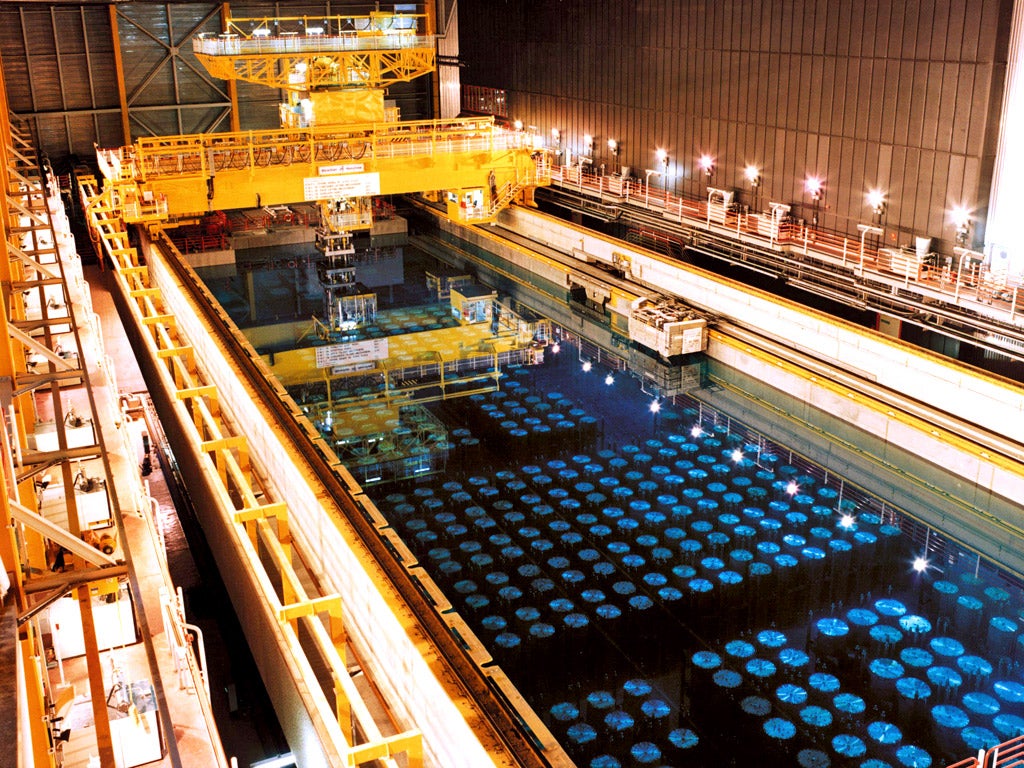Revealed: UK Government's radical plan to ‘burn up’ UK’s mountain of plutonium
Stock of one of the most dangerous radioactive substances, has already exceeded 100 tonnes and is likely to grow to as much as 140 tonnes by 2020,

Your support helps us to tell the story
From reproductive rights to climate change to Big Tech, The Independent is on the ground when the story is developing. Whether it's investigating the financials of Elon Musk's pro-Trump PAC or producing our latest documentary, 'The A Word', which shines a light on the American women fighting for reproductive rights, we know how important it is to parse out the facts from the messaging.
At such a critical moment in US history, we need reporters on the ground. Your donation allows us to keep sending journalists to speak to both sides of the story.
The Independent is trusted by Americans across the entire political spectrum. And unlike many other quality news outlets, we choose not to lock Americans out of our reporting and analysis with paywalls. We believe quality journalism should be available to everyone, paid for by those who can afford it.
Your support makes all the difference.A radical plan to dispose of Britain's huge store of civil plutonium - the biggest in the world - by "burning" it in a new type of fast reactor is now officially one of three "credible options" being considered by the Government, The Independent understands.
However, further delays have hit attempts to make a final decision on what to do with the growing plutonium stockpile which has been a recurring headache for successive governments over the past three decades.
The stock of plutonium, one of the most dangerous radioactive substances and the element of nuclear bombs, has already exceeded 100 tonnes and is likely to grow to as much as 140 tonnes by 2020, bolstered by a recent decision to include foreign plutonium from imported nuclear waste.
Ministers had pledged to resolve the plutonium problem in a public consultation but are sitting on a secret report by the Nuclear Decommissioning Authority (NDA) which is believed to confirm that there are now three "credible options" for dealing with the plutonium stored at the Sellafield nuclear reprocessing plant in Cumbria.
The original "preferred option" was to convert the plutonium into a form of nuclear fuel called mixed oxide (Mox) and then to burn this in conventional nuclear reactors. However, serious questions have been raised about this proposal in the light of the expensive failure of a previous £1.4bn Mox plant at Sellafield, which had to be closed in 2011.
Two other options are now on the table, according to the NDA report. One involves a Canadian nuclear power plant called a Candu reactor which will burn a simpler form of Mox fuel. The other more radical proposal is to burn the plutonium directly in a fast reactor built by GE-Hitachi.
The NDA report, which is classified as commercially confidentially, was itself delayed by several months before being submitted in August to the Department of Energy and Climate Change (DECC). The Government's response to it was supposed to have been published within weeks but has now been delayed until next year - to the consternation of the companies involved in the consultation process.
The plutonium stockpile poses enormous problems for the government. Not only is it highly radioactive and an immense potential danger to health, it is also a target for terrorist attacks and for anyone interested in stealing nuclear weapons-grade material.
A previous public consultation process led the NDA to recommend the conversion of the plutonium into Mox fuel, which would in itself make it less attractive to terrorists. However, Sellafield has a poor record of producing viable Mox fuel and there are no power stations in the UK willing to burn it given that uranium fuel is much cheaper.
However, over the past two years the NDA has performed a U-turn over another option, which is to burn the plutonium directly in a purpose-built fast reactor. Ironically this was the original intention 40 years ago and the reason for building up a plutonium stockpile in the first place, but Britain's own fast-reactor programme was abandoned in the 1990s.
It is understood that the NDA has been impressed by proposals from GE-Hitachi to build a pair of its Prism fast reactors on the Sellafield site, which could in theory burn the plutonium stockpile for up to 60 years, making it safe as well as generating carbon-free electricity.
The NDA's report to DECC is understood to conclude that the Prism fast reactor is as credible as the two other options based on Mox fuel, even though GE-Hitachi has not yet built a commercial-scale plant for burning plutonium waste. DECC, however, has refused to release the report under a Freedom of Information request, saying that publishing its contents could jeopardise future commercial negotiations.
The Independent also understands that DECC is seeking the views of the National Security Council, chaired by the Prime Minster David Cameron, before it releases its public position statement on what should be done with the plutonium stockpile - such is the sensitivity of the issue.
One industry insider said that the delay by DECC may in part be due to the intense negotiations over the strike price for electricity generated by the new nuclear power station at Hinckley Point in Somerset. But another reason is the undoubted sensitivity of any future decision over which option to go for when dealing with the growing plutonium problem.
Although the final contract is unlikely to be signed before 2015, both Candu and GE-Hitachi are keen to know whether they are still in the race for tendering against the French company Areva, which was originally hoping win the contract to build a £3bn Mox plant for plutonium disposal without running up against any competitors.
Join our commenting forum
Join thought-provoking conversations, follow other Independent readers and see their replies
Comments